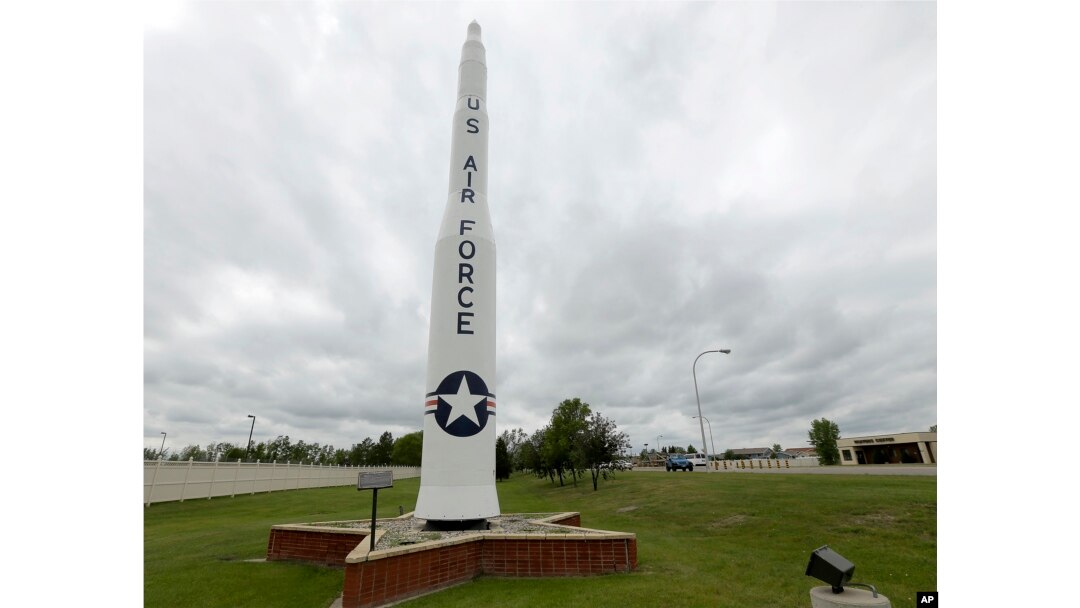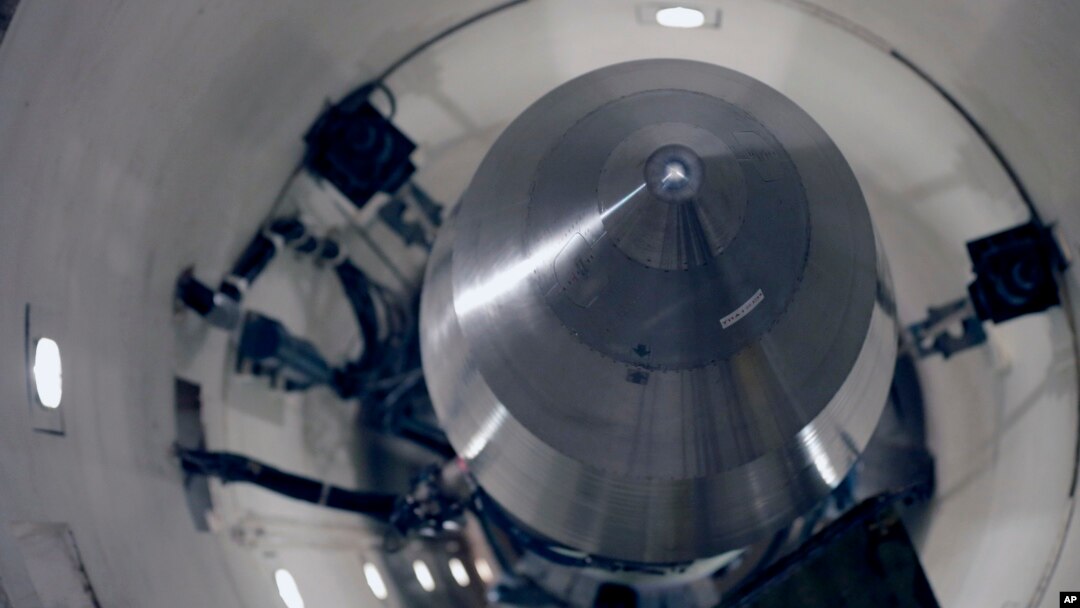About 70 feet (21 m) below ground, in a shielded military capsule that can launch nuclear missiles, 23-year-old 2nd Lieutenant Tia Hewuse is concerned that Americans have the mistaken impression that her mission is a gloomy one.
“America doesn’t understand what we do,” said Hewuse, whose post sits below a tiny U.S. base surrounded by vast expanses of windswept North Dakota farmland.
“This is what keeps our enemies at bay,” she said with a smile.
Hewuse is one of the U.S. Air Force missileers who met Defense Secretary Jim Mattis on Wednesday as he oversees a Pentagon review of America’s aging nuclear arsenal. Experts say it could cost a trillion dollars or more to modernize it.

FILE - A retired Minuteman 1 missile stands at the main entrance to Minot Air Force Base, N.D., June 25, 2014. Critics of the intercontinental ballistic missiles have argued that the silos scattered across thousands of square miles of the upper Great Plains are sitting ducks in a war.
Sitting ducks
Critics of the intercontinental ballistic missiles have argued that the silos scattered across thousands of square miles of the upper Great Plains are sitting ducks in a war and that, given the costs of modernizing ICBMs, the United States should spend its money on weaponry that could better survive a first strike by an enemy.
Mattis himself questioned in 2015 whether the three legs of America’s nuclear triad of ballistic missile submarines, bombers and land-based missiles should perhaps be reduced to a “dyad.”
But in the latest sign that places like Hewuse’s Cold War-era missile alert facility will be around for years to come, Mattis said Wednesday he believed all three portions of the triad were vital.
“I have been persuaded that the triad, in its framework, is the right way to go,” Mattis told reporters traveling with him to Minot Air Force Base, where he got a firsthand look at U.S. land-based nuclear missile facilities and nuclear-capable bombers.
Mattis declined to set a deadline for the review, which is expected to take months to complete.
Fire and fury
Mattis’ tour of America’s doomsday weaponry comes as President Donald Trump uses bellicose rhetoric about the “fire and fury” that could await North Korea, should it choose to attack the United States.
North Korea has responded with similarly bellicose warnings after it staged its sixth and largest nuclear test this month.
In July, Pyongyang tested an ICBM that experts believe was capable of reaching most of the United States.
U.S. officials have also noted that America’s nuclear modernization is lagging behind Russia’s upgrade of its own nuclear triad.
General Paul Selva, vice chairman of the Joint Chiefs of Staff, told Congress in August he believed Moscow was two-thirds through its nuclear modernization process.
The Arms Control Association estimates that the total cost of upgrading the U.S. nuclear forces will be between $1.25 trillion and $1.46 trillion over the next 30 years.
Mattis, without offering a figure, suggested that nuclear deterrence was worth the investment.
“America can afford survival,” he said.
Mission impossible
Mattis says his goal would be to ensure that an adversary concludes that there is no viable prospect for successfully attacking the United States and surviving.
“We want the enemy to look at it and say this is impossible,” he said.
The land-based, nuclear-capable missiles are a big part of that.
The U.S. forces who staff these facilities near the U.S. border with Canada have to endure bitter cold in the winters, which can get so bad that missileers can be stuck at their posts for up to 72 hours, officials said.
Officials says morale has improved since the nuclear forces were rocked by test-cheating and drug scandals under the Obama administration and a 2007 incident under the Bush administration, when the Air Force accidentally flew live nuclear weapons between Minot and another U.S. base.
Hewuse uses her free time to study for a postgraduate degree in entrepreneurship. She has also brightened her capsule by painting the lock used to keep nuclear missile launch keys shut in a cabinet above her head.
She painted the lock gold, with sparkles.
“I’m a pretty sparkly person,” she said. “There’s no sunshine in here. So that’s my sunshine.”


